
GUEST BLOGGER DR. RENA HAWKINS
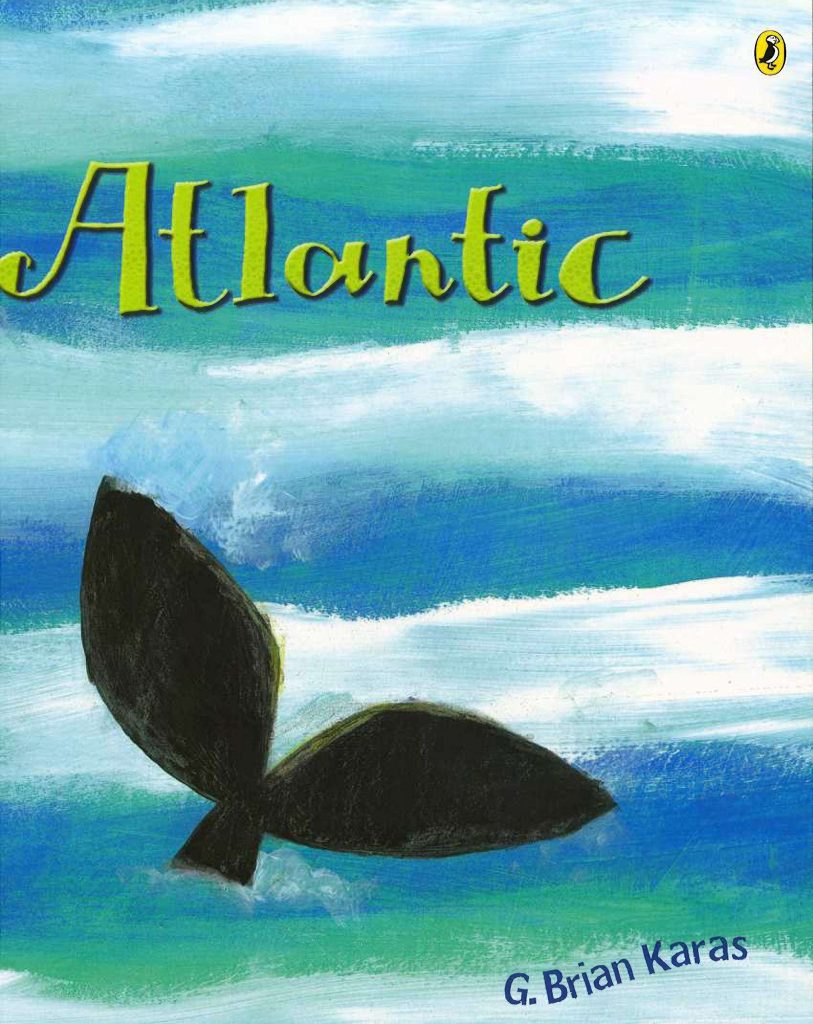
Don’t you love finding a book that connects science and art? Atlantic by G. Brian Karas has poetic language, beautiful artwork, and factual information spanning a range of ocean facts from mapping, the water cycle, and more! It would be the perfect book to introduce a unit related to these topics.
Reader’s Workshop–You Are About to Get Schooled!
The following lesson uses Atlantic to explore schema or background knowledge in a Reader’s Workshop unit. The idea can be adapted for elementary grades. Using the Reader’s Workshop format of Connect, Teach, Active Engagement, and Link (CTAL), the lesson may sound like this…
Connect:
“Readers, we have been talking about how your brain stores information about many topics, like the file cabinet in this classroom. Your brain is able to create files of the information you know and add to these files or correct misconceptions as you learn. All of the information and experiences you hold in your brain is called background knowledge or schema. When you activate your schema, you think about what you already know about the topic. Today we are going to activate our schema about the ocean as we read the book Atlantic by G. Brian Karas.”
Teach and Active Engagement
“Before we begin, look through the files stored in your brain to find the file labeled “ocean” and think about what you already know about this topic. Our information may come from movies, books, a visit to the ocean, or what others have told us about the ocean.”
(Teacher may choose to model his/her schema about the ocean by listing one idea on each sticky note and placing each sticky note under the top half of the page labeled “Our Schema” or collecting ideas from students. Allow all students to turn and talk to a neighbor to begin discussion.)
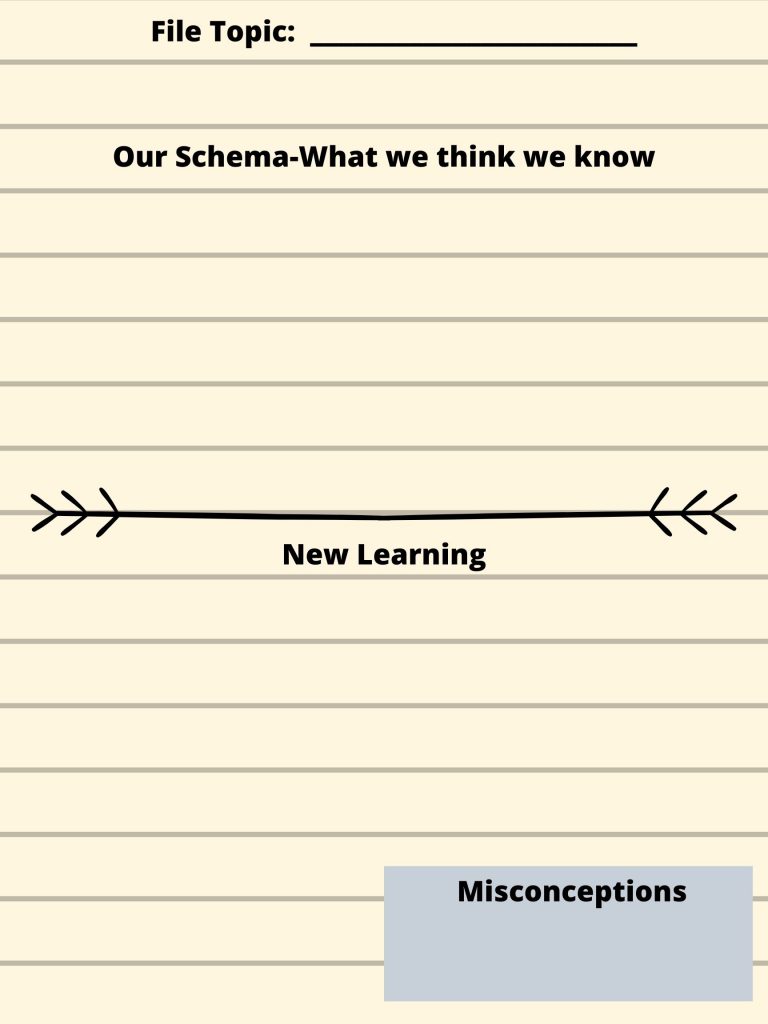
Here is background knowledge I might model for students (one per sticky note):
- I can collect shells on the beach at the ocean.
- The tide comes farther in on the beach and moves farther out throughout the day.
- When jellies swim close to the shore, they might sting you.
“As we read it is important to take notice of our schema that is confirmed and new information that we want to hold onto and add to our schema. We might also find we have misconceptions about the topic that need to be corrected.”
Begin reading the book to the class, pausing to model how new information is recorded with one fact per sticky note and added to the bottom half of the chart under “New Learning”.
“You may hear a voice inside your head get excited as you read a new fact. Listen to that voice and take time to record this new information so you can hang on to this learning and add it to the file in your brain.”
Plan for stopping points throughout the read aloud for students to discuss and name their new learning. Record each fact on a sticky note and display it on the bottom half of the chart. Here is new learning I might record to model for students how I grow my schema:
- The Atlantic Ocean stretches from the North Pole to the South Pole.
- The ocean can change the shape of the land.
- The moon controls the ebb and flow of the tide.
“Sometimes we will read a fact that will prove that what we thought we knew about the topic is not entirely correct. We have a misconception in our belief.”
(Any thoughts/sticky notes from the initial activation of background knowledge that are proven to be a misconception can be moved to the bottom of the chart in the box labeled “misconceptions”.)
“As my background knowledge is confirmed while I am reading this book, I can put a checkmark on that sticky note to indicate it is confirmed in my reading.”
Continue reading the book and using this process to grow the class’ schema about the ocean by confirming and correcting misconceptions and recording new learning.
Link
“Today during independent reading, I want you to think about how you activate your schema for a topic before and during reading. You can create a similar chart in your Reader’s Notebook and use sticky notes to follow the same process.”
The teacher may choose to have a stack of nonfiction books that students choose from to continue this work. As you release responsibility to students, you may also have them work in pairs. If the class is planning to continue the ocean study, the additional books may cover topics about the ocean.
Additional Books About the Ocean
- Shark Lady: The True Story of How Eugenie Clark Became the Ocean’s Most Fearless Scientist by Jess Keating; illustrated by Marta Alvarez Miguens
- Manfish: A Story of Jacques Cousteau, by Jennifer Berne; illustrated by Éric Puybaret
- The Brilliant Deep: Rebuilding the World’s Coral Reefs: The Story of Ken Nedimyer and the Coral Restoration Foundation by Kate Messner; illustratred by Matthew Forsythe
- Ocean Animals: Who’s Who in the Deep Blue by Johnna Rizzo
- Save the Ocean by Bethany Stahl
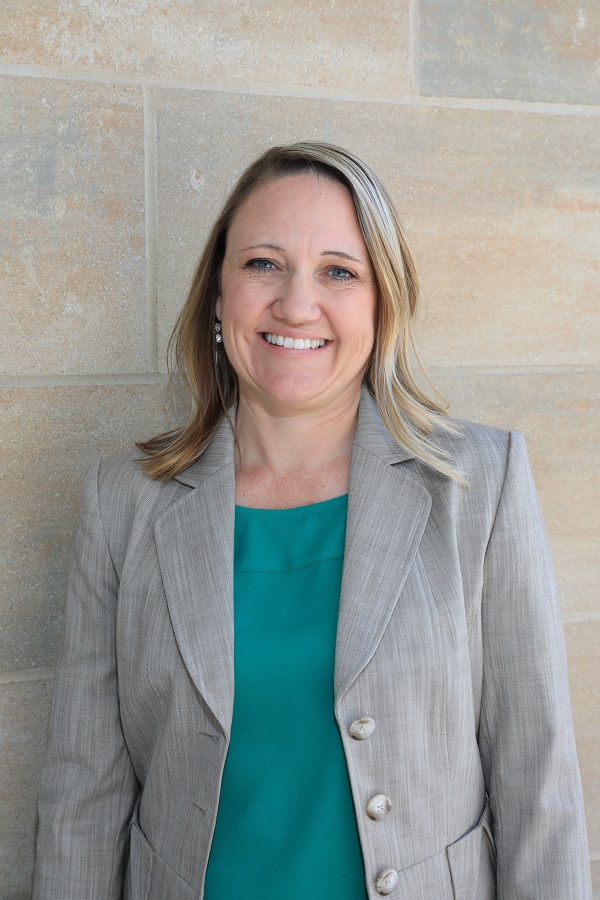
Dr. Rena Hawkins is principal at Maple Elementary School in Smithville, Missouri. She was named a METC20 Spotlight Educator and was selected as a 2018 Missouri Association of Elementary School Principals Exemplary New Principal. She co-hosts the Share Mo Edu Podcast, working to amplify positive voices in education. This past school year she facilitated an elementary student leadership group that produced live morning video announcements and a student podcast. Find her website at http://sharemoedu.weebly.com and her podcast at https://sharemoedu.podomatic.com. Follow her on Twitter @renathunderhawk.
Click for more LITLINKS STEM + Literacy activities
Featured Image “Ocean at Avalon” by mattwitmer is licensed under CC BY-NC 2.0


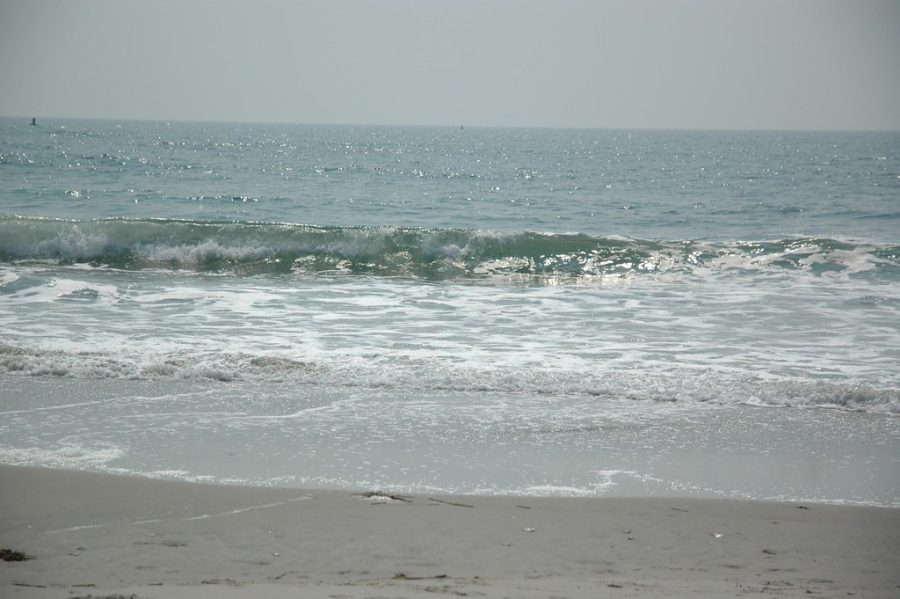


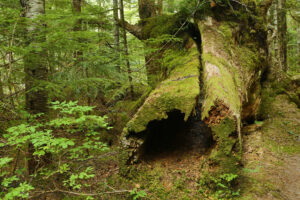


Leave a Reply
Your email is safe with me.